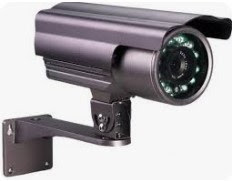Routers and Switches are fundamental networking devices that play distinct roles in a network. Let's discuss each one and how they can be connected together.
1. Routers:
i. Role: Routers operate at the network layer
(Layer 3) of the OSI model and are responsible for forwarding data between
different networks. They make decisions based on IP addresses.
ii. Functions:
Ø Routing:
Determines the best path for data to travel between different networks.
Ø Network Address
Translation (NAT): Translates private IP addresses to a public IP address to
allow multiple devices in a private network to share a single public IP.
Ø Firewall:
Provides a level of security by filtering and controlling traffic based on
defined rules.
iii. Connection:
Ø Routers are
typically connected to Wide Area Networks (WANs) or the internet.
Ø They connect to
different networks and manage traffic between them.
2. Switches:
i. Role: Switches operate at the data link
layer (Layer 2) of the OSI model and are responsible for forwarding data within
the same network. They use MAC addresses for decision-making.
ii. Functions:
Ø Switching:
Forwards frames based on MAC addresses, creating a network where devices can
communicate directly.
Ø Learning:
Switches learn the MAC addresses of connected devices and build a MAC address
table to make forwarding decisions more efficiently.
iii. Connection:
Switches are typically used within
Local Area Networks (LANs) to connect devices like computers, printers, and
servers.
3. Connecting a
Router and a Switch:
To create a basic network, you can
connect a router and a switch as follows:
i. Connect Router to Internet/WAN:
Connect the router's WAN/Internet
port to the modem or internet source using an Ethernet cable.
ii. Connect Router to Switch:
Connect one of the router's LAN ports
to one of the switch's ports using an Ethernet cable.
iii. Connect Devices to Switch:
Connect computers, printers, and
other devices to the switch ports.
iv. Configure Router:
Access the router's configuration
interface through a web browser and configure settings such as DHCP (Dynamic
Host Configuration Protocol) if needed.
v. Configure Devices:
Set devices connected to the switch
to obtain IP addresses automatically (via DHCP) or configure static IP
addresses within the same subnet as the router.
This setup allows devices connected
to the switch to communicate with each other within the same network and access
the internet through the router. The router manages traffic between the local
network and external networks.








0 Comments